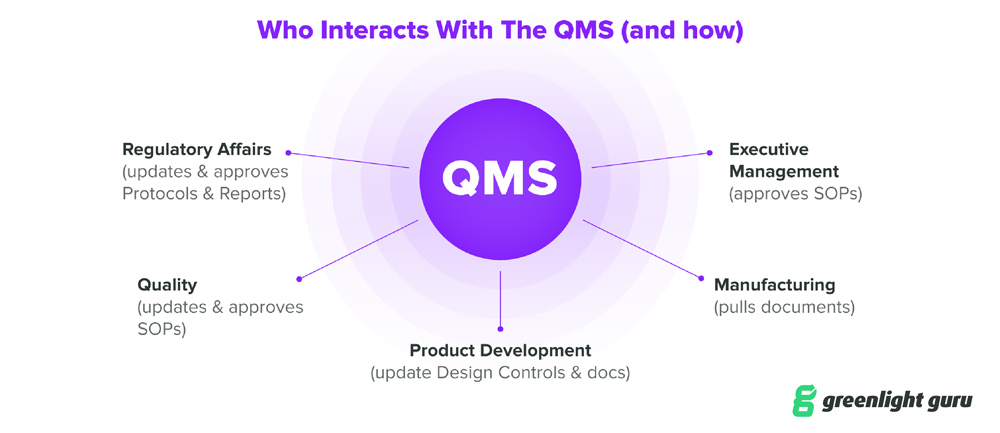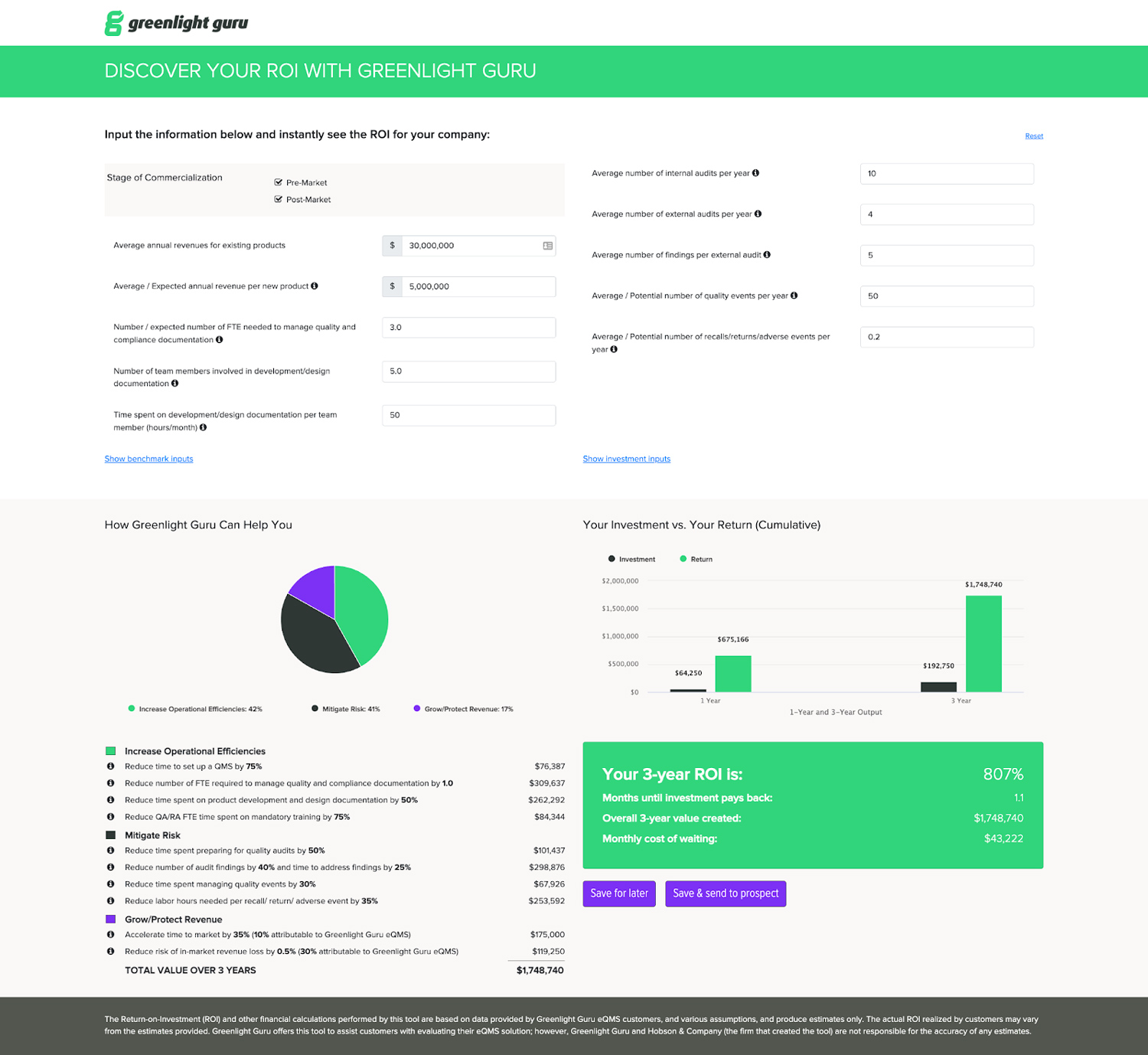
Also referred to as a project plan, the transition plan is the summary of how you intend to get from A to B—meaning from your old QMS to the new one. It should answer questions like:
• What are the steps involved in transitioning to the new QMS?
• What kind of support will you get from the eQMS vendor for the implementation?
• Who will need to be trained on the new software, and how long will that take?
• What are the risks involved in transitioning, and what are you doing to mitigate them?
• What is the estimated timeline for the transition, and how does it interact with key dates like audits or other business goals?

This step should really begin as soon as you decide you’re going to build the case for a new eQMS. Even if you’re spearheading the process, you need everyone who has a stake in this process to be involved.
So please consider turning off your ad blocker for our site.
At this point, you’ve likely accumulated a mountain of documentation for this purchase. But to effectively present your business case to an executive team, you’ll need to be concise and clear.
At this stage, you’re laying the groundwork for your business case, answering questions like:
• What is your policy on vendor evaluation? How many quotes are you required to get?
• What is the current budget for your QMS? Will that need to increase for this purchase?
• Where in the current budget cycle are you? Has a budget already been approved for the coming year? Timing can play a large role in getting approval for a new QMS.
• What documents will you need to create as you begin building this business case?
• Whose final approval will you need for this purchase? Is it a department head? Finance? Will there be several people who need to sign off on this?
There’s a good chance your company will require you to formally evaluate multiple vendors and get more than one quote. Even if you feel strongly about a particular eQMS solution, you’ll still need to go through a vendor evaluation process as you build your business case.
One of the best ways to bolster your business case is by focusing on ROI.
For instance, an independent study by the research firm Hobson & Co. found that Greenlight Guru’s eQMS solution resulted in:
• 50% reduction in time spent on development and design documentation
• 75% reduction in QA/RA time spent on mandatory training
• 50% reduction in time spent preparing for audits
• 40% reduction in the number of audit findings, and a 25% reduction in the time it took to address those findings
Click here to download your PDF copy of the eQMS Buyer’s Guide: Making the Business Case for a New QMS Solution.
5. Determine the ROI for this investment
This will be at the heart of your business case, and it should answer questions like:
• What are the challenges you face with your current QMS? How are these challenges affecting the business (e.g., wasting team members’ time on menial work)?
• How is the organization operating with the current solution, and how would a new QMS solution change operations for the better? What are the benefits of switching?
• How are you going to measure success? What metrics will you measure? What objectives and key results (OKRs) will you be tracking?
You can see how the examples above will potentially save the company money or generate more revenue. So you can tell your executives that the investment in an eQMS will pay for itself over time.
6. Establish your transition plan
Typically, engineers like to talk about the details: the base of the mountain of information, we can call it. But what your executives need to hear is the most important information—the peak of the mountain—that everything is building up to.
As you go through this process, a vendor evaluation checklist can be an excellent tool to keep track of the different options and quickly compare them. Here are 14 key questions you should be asking every eQMS vendor:
1. Is this eQMS built specifically for medical device companies?
2. Is this solution aligned with major national and international medical device regulations and standards?
3. If not, how much customization is required? What is the cost and timeline for that customization?
4. Is the QMS software simple enough to implement quickly, but robust enough to meet the needs of larger companies?
5. Are purpose-built capabilities for managing design controls and risk management fully integrated into the QMS?
6. Are turnkey workflows for all aspects of the quality system available out of the box?
7. Does this QMS ensure full traceability throughout the entire medical device life cycle?
8. Can this eQMS help my team achieve a truly paperless audit?
9. Do you have medical device experts on your customer success team?
10. How quickly can this QMS solution be implemented?
11. How will this QMS help you stay proactive and ahead of regulatory changes?
12. Is ongoing software validation included at no additional cost?
13. Is this QMS solution built with a secure, modern architecture?
14. What is the total cost of ownership (TCO) and return on investment (ROI) we can expect?
Customer Care
Making the Business Case for a New QMS Solution
An eQMS buyer’s guide
There are a number of ways to structure a list of personnel, but a tool like a RACI chart (responsible, accountable, consulted, informed) may be useful to help you keep track of everyone and ensure you’re communicating well throughout the process.
3. Identify internal stakeholders and sponsors
You’ll also want to show your department leadership and executive team that a new eQMS will provide measurable value to the company, and there will be a clear return on the investment in the software. You can frame this in a number of ways. For example:
• Fewer resources will be required to manage the new QMS, thus saving the company money—especially on expensive external support.
• The new eQMS will increase the speed at which you get high-quality products to market, generating more revenue for the company.
• It will also reduce risk related to noncompliance, which could be a high cost to your business. A warning letter from the U.S. Food and Drug Administration may require years to resolve, eating up precious resources.
In fact, G2 recently gave Greenlight Guru the “Best ROI” award among QMS software solutions.
Our PROMISE: Quality Digest only displays static ads that never overlay or cover up content. They never get in your way. They are there for you to read, or not.
Thanks,
Quality Digest
